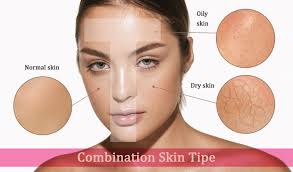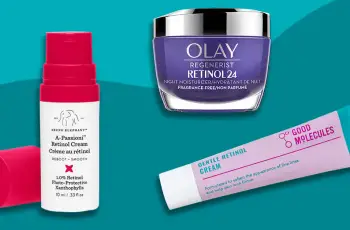
Is My Skin Dry or Oily? How to Tell the Truth About Your Skin Type
Most people guess incorrectly whether their skin is dry or oily, and this simple mistake can lead to years of using products that make skin issues worse, not better.
Even in dermatology clinics, patients are often surprised to learn their assumptions about their skin type were wrong—and it’s more common than you might think.
Understanding your skin type is essential because your skincare should work with your natural skin traits, not against them, to achieve the best possible results.
If you use oily skin products on dry skin, your face can become flaky, itchy, and stripped of its essential oils, leading to long-term barrier damage and sensitivity.
Likewise, applying rich, creamy moisturizers meant for dry skin to oily or acne-prone skin can clog pores, increase breakouts, and make you feel greasy all day.
So, how do you figure it out once and for all? That’s where science—and a dermatologist-approved skin type quiz—comes into play to give you real clarity.
Why Skin Type Matters More Than You Think
I’ve been a dermatologist for decades, and I always tell my patients that determining whether your skin is oily, dry, or somewhere in between is non-negotiable.
Your skincare routine—from cleanser to toner to serum to moisturizer—depends on this foundational step, which is why it’s the starting point for any regimen.
Using the wrong types of products for your skin condition can cause damage, discomfort, or simply no results, even when you’re doing everything “right.”
An accurate assessment of your skin type is essential before choosing products, and dermatologists rely on scientific quizzes, not just appearances, to do this.
Common Symptoms of Oily Skin: 7 Telltale Signs to Know
You feel like every sunscreen makes you look or feel greasy within an hour of applying it, making it difficult to protect your skin consistently.
You dislike the feel of oil on your skin and often seek mattifying products or blotting papers to reduce that unwanted shine throughout the day.
You avoid heavy moisturizers because they feel suffocating or slippery, and you rarely use creams unless the weather is extremely cold or dry.
You only moisturize once a day, if at all, because your skin still feels fine or even oily throughout the day without an extra hydration step.
You can wash your face with almost any type of soap, including bar soap or foaming cleansers, and your skin doesn’t feel too stripped afterward.
You often notice your skin is shiny in photographs, especially around your forehead, nose, and chin — the classic T-zone areas.
When traveling to dry or cold climates, your skin doesn’t immediately feel uncomfortable or tight during the first few days of adjustment.
Symptoms of Dry Skin: 8 Clues That You’re Dehydrated or Lacking Oil
Your skin feels rough to the touch, especially on the cheeks or around the mouth, even when you’re using moisturizer regularly.
Your skin doesn’t reflect light easily and often appears matte or dull, even when you try to use products meant to add glow or radiance.
You love the feeling of oils and heavier creams on your skin, and your face often soaks them up within minutes without feeling greasy.
You rarely skip moisturizer and apply it at least twice daily because going without it even briefly leaves your skin feeling tight or itchy.
Serums with hyaluronic acid don’t feel hydrating enough on their own, and you always layer them under thicker creams or oils.
Bar soaps and foaming cleansers cause irritation, itching, or rashes, and you prefer cream or oil-based cleansers to avoid that tight feeling.
You notice scaling or visible flaking on certain areas of your face, particularly during winter or after washing your face with the wrong product.
Your skin often feels itchy or irritated, especially in cold, windy, or dry environments, and you may have experienced eczema in the past.
Why You Should Take a Scientific Skin Type Test
When I was a Professor of Dermatology at the University of Miami, I was shocked to discover how many people had misdiagnosed their skin type.
That’s why I created a scientifically validated questionnaire to help people determine whether they have oily or dry skin accurately and consistently.
Over the past 19 years, I’ve tested, improved, and perfected this quiz, and it has now been used by dermatologists globally to help thousands of patients.
In fact, the quiz is the core of the Baumann Skin Typing System, which has helped develop over 40,000 customized skincare routines worldwide.
Many people are surprised to learn that your skin type can change over time — from oily to dry or vice versa — depending on internal and external factors.
Taking the quiz regularly helps you track those changes and adjust your skincare products before your routine stops working or causes new issues.
How to Tell If Your Skincare Isn’t Working
If your skin feels worse, your moisturizer feels too heavy or too light, or your cleanser makes you feel tight, it may be time to retake the skin type quiz.
Hormones, stress, climate, diet, and product changes all impact your skin’s oil production and hydration levels — sometimes faster than you’d expect.
Seasonal changes are another major trigger: many people need different moisturizers and cleansers for summer versus winter or humid versus dry air.
What About Combination Skin? Does It Really Exist?
“Combination skin” is often misunderstood — it’s not a true skin type but rather a description of skin that behaves differently in different environments.
If your T-zone (forehead, nose, chin) is oily, but your cheeks feel dry or tight, dermatologists still classify you as having oily skin overall.
Skin that’s dry in cold or arid climates but becomes oily in warm, humid ones is considered to have changing skin behavior, not a permanent hybrid type.
Try This At-Home Test to Check If You Have Oily or Dry Skin
Step 1: Wash your face with a gentle gel cleanser like Cetaphil or Cerave (no creamy or foaming cleansers, no active ingredients).
Step 2: Don’t apply any moisturizer.
Step 3: Wait 20 minutes.
Now assess:
If your skin feels shiny and hydrated, you likely have very oily skin.
If it feels comfortable and balanced, your skin is normal oily.
If it feels tight, itchy, or uncomfortable, you’re likely dry or very dry.
If you couldn’t even wait the full 20 minutes due to discomfort, your skin is very dry.
More Clues That You Might Have Oily Skin
You can use foaming cleansers or bar soap with no issues.
You sometimes forget to use moisturizer and don’t miss it.
You feel the need to wash your face again by midday.
Sunscreen often feels greasy, even if labeled “oil-free.”
You have visibly enlarged pores, especially around the nose.
Your skin naturally glows — sometimes more than you’d like.
You feel greasy in hot weather and may experience more breakouts.
Clues That Indicate You Have Dry or Very Dry Skin
You never use bar soap or shampoo on your face.
You prefer heavy, rich creams and oils to thin lotions.
You use a moisturizer twice daily without fail.
You find foaming cleansers too stripping or irritating.
Your skin feels rough, flaky, or visibly ashy, especially if darker-toned.
Your skin often itches and lacks radiance without extra hydration.
You are prone to eczema or skin sensitivities.
Your Skin Type Can Change — Here’s Why
Many people don’t realize that your skin type isn’t fixed for life — it can change based on hormones, stress, location, age, and even your skincare habits.
For example, using exfoliants too frequently can make oily skin turn dry, and skipping moisturizers can cause dryness even in a naturally oily skin type.
Moving to a new climate, going through hormonal changes like pregnancy or menopause, or even changing your diet can shift how your skin behaves.
That’s why it’s important to retake the quiz regularly, especially when your products stop working or your skin doesn’t feel “right” anymore.
The Ultimate Goal: Balanced, Slightly Oily Skin
In dermatology, slightly oily skin is considered the healthiest because sebum (your skin’s natural oil) acts as a protective barrier to retain moisture.
If you’re naturally oily, your skin may need less product; if you’re naturally dry, the goal is to support your skin until it behaves more like a balanced type.
Expect your skincare needs to change with the seasons and with your environment, so keep checking in and don’t assume your skin is staying the same.
Take the Quiz to Learn Your Skin Type
If you’re unsure whether your skin is oily or dry, don’t rely on guesswork or assumptions — the Baumann Skin Type Quiz will give you an accurate answer.
Once you know your skin type, you’ll get a customized list of products and a complete skincare routine that matches your skin’s unique needs perfectly.
If your current routine isn’t working, or your moisturizer suddenly feels off, it might be time to retake the quiz and find out what your skin is asking for now.
Take the quiz, get the answers, and let your skincare work with your skin, not against it.


